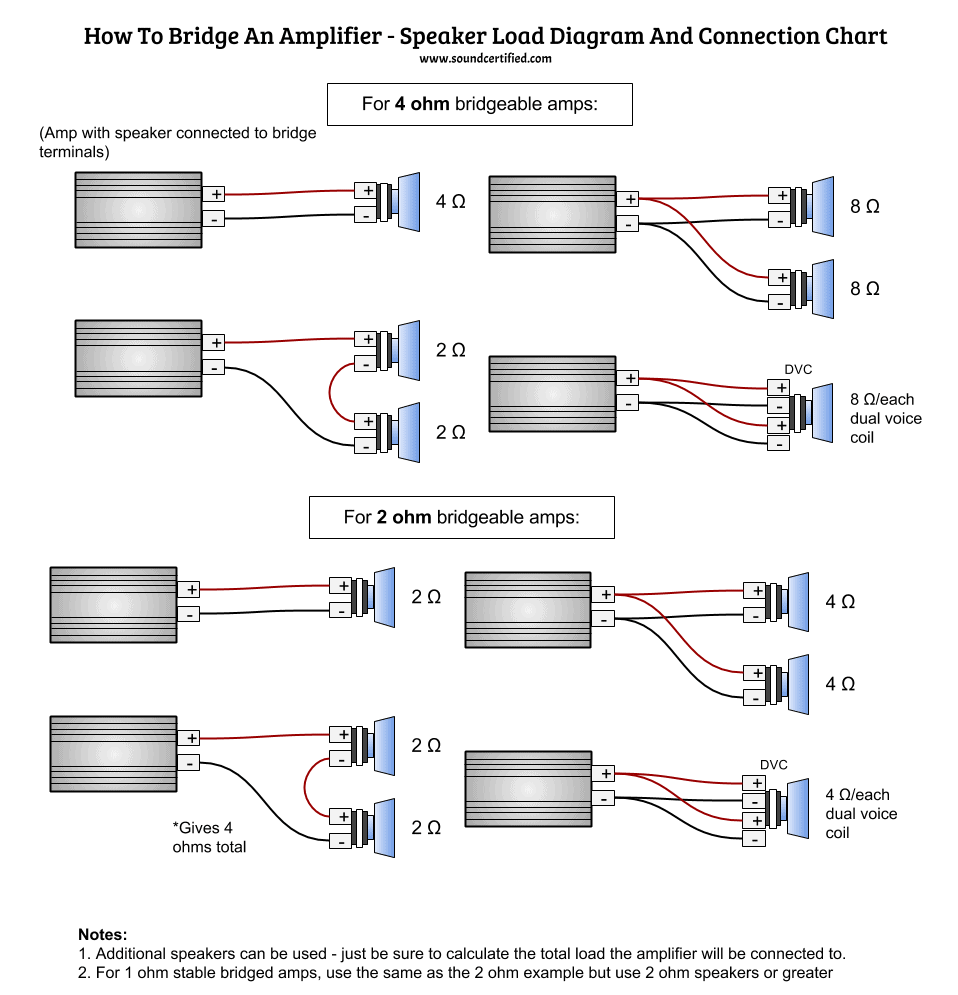Photo Source : wikihow.com
A speaker bridge is a device that is used to join two or more loudspeakers together. This allows you to create a single, larger speaker system.
Do you want to know how to bridge two speakers? It’s not as difficult as it may seem. In this complete guide, we will walk you through the entire process step-by-step. Keep reading to learn more!
Types Of Bridge Speakers
Photo Source : wikihow.com
There are three main types of bridge speakers: those that are integrated into the speaker, those that are external to the speaker, and those that are portable.
Integrated Bridge Speakers
Integrated bridge speakers are the most common type. They come with their own built-in amplifier and crossover circuitry. This makes them very easy to install and use. However, they can be more expensive than other types of bridge speakers.
External Bridge Speakers
External bridge speakers are less common than integrated ones. They don’t have their own amplifier or crossover circuitry. This means that you’ll need to buy these components separately and install them yourself. External bridge speakers can be a great option if you want more control over your sound system.
Portable Bridge Speakers
Portable bridge speakers are the least common type. They’re designed to be used with portable audio players, such as iPods or MP ers. Portable bridge speakers usually have their own built-in amplifier and crossover circuitry. This makes them very easy to use. However, they can be more expensive than other types of bridge speakers.
These are the three main types of bridge speakers. Now that you know about them, you can decide which type is right for you.
If you’re looking for an easy-to-use speaker, then an integrated bridge speaker is a great option. If you want more control over your sound system, then an external bridge speaker might be a better choice. And if you want a speaker that’s easy to take with you, then a portable bridge speaker might be the best option.
Ways On How To Bridge Speakers
Photo Source : wikihow.com
There are many ways on how to bridge speakers. You can use a standard speaker wire, an audio receiver, or an amplifier. Each method has its own advantages and disadvantages.
Use Speaker Wire
When it comes to bridging speakers, using a standard speaker wire is one of the easiest and most common ways to do it. This type of wire is typically made of copper and can be easily found at electronics stores. To bridge the speakers, you will need to connect one end of the wire to the positive terminal of the first speaker and the other end to the negative terminal of the second speaker.
Use an Audio Receiver
If you have an audio receiver, you can use it to bridge your speakers. This method is ideal if you have a surround sound system since most receivers come with multiple outputs. To connect the speakers, you will need to connect one set of wires to the left output and the other set to the right output.
Use an Amplifier
If you have an amplifier, you can use it to bridge your speakers. This method is ideal if you have a powerful stereo system. To connect the speakers, you will need to connect one set of wires to the left channel and the other set to the right channel.
No matter which method you choose, make sure that the wire gauge is thick enough to handle the power output of your stereo system. Otherwise, you may damage your speakers or your amplifier.
Also, be sure to consult your stereo’s manual before making any connections. By following these simple tips, you’ll be able to easily bridge your speakers and enjoy your music to the fullest. Enjoy!
Benefits Of Bridging Speakers
Photo Source : wikihow.com
One great benefit of bridging your speakers is increased power handling. When you bridge two speakers, they are working together as a single unit, which increases their power handling capabilities. This means that you can play your music louder without fear of damaging your speakers.
Another advantage of bridging your speakers is that it creates a more focused sound. Since the two speakers are working together, they create a tighter, more focused soundstage. This can be beneficial if you want to create a more intimate listening experience.
Finally, bridging your speakers can also help to improve the overall clarity of your sound system. By creating a more focused soundstage, bridged speakers can help to reduce any unwanted resonance or echo that might be present in your system. This can result in a cleaner, more accurate sound.
If you’re looking to get the most out of your speakers, bridging them is definitely something you should consider. By increasing their power handling capabilities and creating a more focused soundstage, bridged speakers can help take your sound system to the next level. So if you’re ready to get the most out of your speakers, be sure to give the bridge a try.
Final Words
Speakers are a very important part of any audio system, and they come in all shapes and sizes. Bridging speakers is a great way to get the most out of your audio setup, and it’s not as difficult as you might think. With a little bit of planning and the right equipment, you can bridge speakers like a pro.

I’m Davis Brooks, a professional speaker and blogger behind speakersblog.com. With over 10 years of experience in the speaking industry, I am passionate about helping aspiring speakers to develop their skills and find success in their field. Through this blog, I aim to provide up-to-date expert advice and resources for public speaking professionals. My mission is to help more people achieve their goals in the speaking world.


